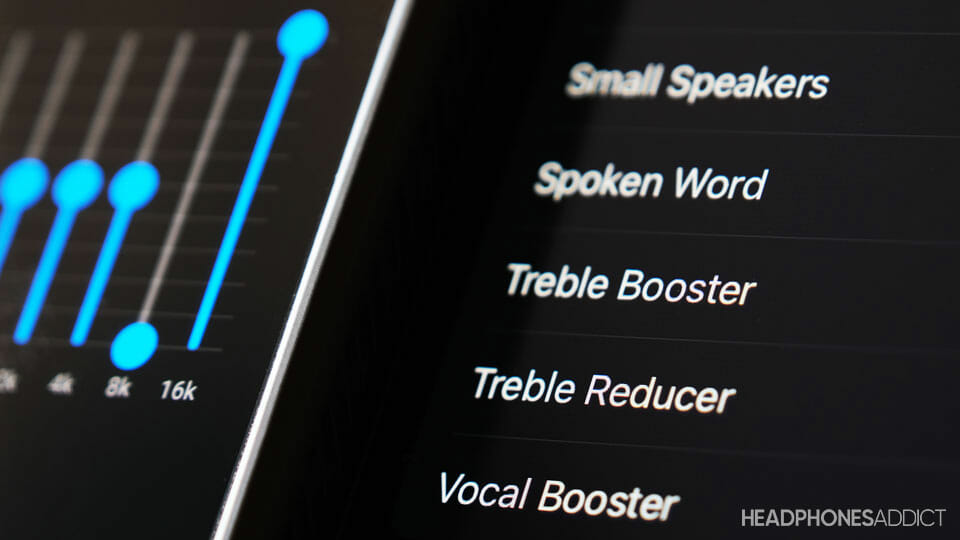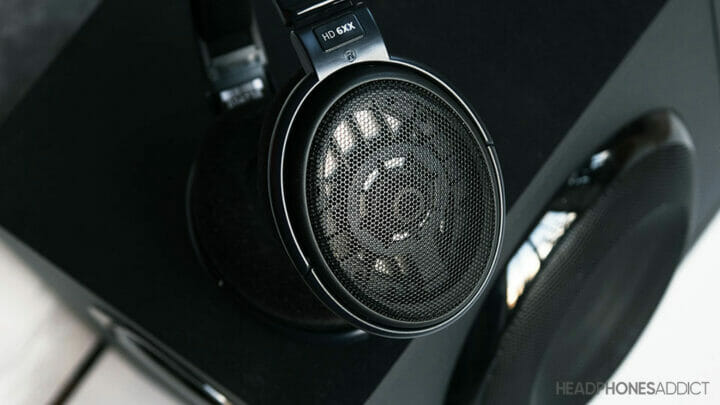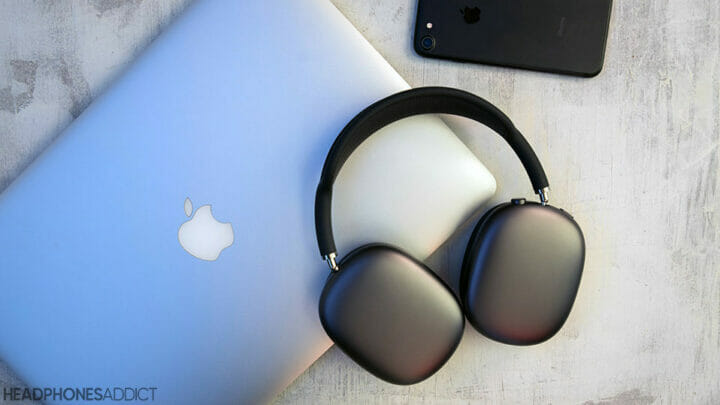Treble consists of frequencies from 4.000Hz to 20.000Hz and provides clarity and airiness to your music, making it sound more flowing.

What is Treble in Music?
Treble in music represents cymbals and higher notes of vocals and instruments like pianos, violins, etc. Mostly, it clears up the audio and makes it more detailed.
Having an excellent treble extension means you have an airy sound, which adds “space” between each instrument so you can hear it more precisely.
However, many headphones are tuned to roll off the treble after 10kHz, especially headphones under $100. While that doesn’t sound unlistenable, it becomes less airy and transparent.
What is treble frequency range
The treble is the third and highest range (bass and midrange being the first and the second) that extends from 4.000Hz to 20.000Hz. It dissects into 3 types or sub-ranges. More on that later.
The 20.000Hz represents the top threshold of what ordinary people can hear, and only when they are young. With age (and due to exposure to loud sounds), the ability to hear higher frequencies diminishes.

How Treble Affects Sound Quality
Treble affects sound quality by making it more transparent, crisper, and easier to listen.
Treble has an impact on both the bass and midrange. All three major frequency regions work in synergy; if one lacks, it affects the entire sound.
Bass
The most significant effect treble has on bass perception is the frequency region between 10kHz and 12kHz. This region makes the kick drum sound crisper and more apparent.
You can observe this when you hear fast double-pedal bass kicks, and the bass frequencies themselves get a bit muffled, but because of that crispiness, you can still hear those kicks relatively clearly.
Midrange
Treble has by far the largest effect on midrange frequencies. For starters, it makes everything sound much clearer.
Airiness is another thing that frequencies ranging from 10kHz and above add to the mid-frequencies. You can describe “air” as the ability to create “space” between instruments and make them sound less congested.
Furthermore, it adds clarity to vocals that would otherwise sound dull. Frequencies between 4kHz and 8kHz even add sharpness and grittiness to electric guitars.

Imaging
Accurate imaging also heavily relies on treble quality. The imaging helps to place sounds on a sound field from left to right and lets you know where they come from.
Without clear treble, sounds become muffled and lack detail, making it harder to detect their direction. Clearing the treble up helps pinpoint the exact location of the sound. It improves immersion, especially in movies and games.
Impact of treble on music genres
All music genres feel the boost or reduction in higher frequencies.
They give the sound clarity and air. However, without them, they sound dark; too much of treble makes them bright and sibilant.
If we have to nitpick, here are the genres most affected by treble:
Classical
Classical music is often played by many different instruments simultaneously, covering a broad frequency spectrum.
Higher frequencies make instruments sound more resolving and airy. They help the listener separate between the instruments and prevent them from clogging together.

Rock
Most of the electric guitar’s grittiness lays in the treble, so you don’t want it muted. Also, cymbal crashes don’t sound as loud and crisp without high frequencies.
However, if improperly tuned, all that instrument distortion and screaming vocals can quickly turn into harsh sibilance.
The treble impact on the balance of sound quality
Treble impacts the balance of sound quality by exposing fine details and adding resolution and texture to vocals and instruments.
While bass and mid-range help to create the sound full and natural, the treble sharpens everything up. As if you would pull away a thick blanket covering the speakers.
Also, sharpening the sound means hearing more details and microdetails, tiny nuances in a singer’s voice, musical instruments, and sound effects.
Can too much treble negatively impact audio quality?
Too much treble can negatively impact audio quality by exaggerating sibilance (sharp sounding “s”, “sh”, and “ch” letters) and harshness of instruments.

Loud electric guitars and cymbals can induce listeners’ fatigue. That is when your ears get tired of loud noises, and make you want to take a break.
Pushing the treble further can even result in physical pain. When the sound is so piercing, you immediately want to take the headphones off.
Bright headphones can be used for monitoring your audio or during music production to reveal potential errors in the mix.
What is the difference between bass and treble?
The bass and treble are on the opposite side of the audible frequency spectrum. If bass covers 20-250Hz, the treble range covers a much broader 4.000-20.000Hz.
Going below 20Hz is called infrasound, whereas going above 20.000Hz is called ultrasound.
The bass makes the sound full and adds warmth and punchiness, if the audio asks for it.
On the other hand, treble adds clarity, air, and texture, ensuring that every sound stands out on its own.
The video shows how bass boost and treble boost affect music:
What is Treble Quality?
Treble quality is the headphones’ ability to reproduce high frequencies faithfully and without losing details.
Higher frequencies are the hardest for headphone manufacturers to tune right. They require careful headphone design and quality drivers to avoid distortion and reverberation inside earcups.
That’s why most headphones under $200 can’t really faithfully portray treble. Instead, many rely on 8-9kHz peak, which adds artificial clarity (psychoacoustic trick) but also harshness and fatigue.
What is considered good treble quality?
- Good treble quality is considered when the sound is clear and textured enough so that you hear each instrument nicely and clearly and that the cymbals have a lovely shimmer.
- Excellent treble quality clears the sound even further, adding clarity to each instrument and lushness to the vocals. Plus makes your music sound effortless and airy.
The most challenging part of tuning treble is to make it smooth and easy to listen without losing clarity, texture, and detail.
What is Treble Quantity?
Treble quantity is how loud or quiet high frequencies are or how much energy they carry.
Lots of treble quantity makes for a fatiguing, harsh sound that will quickly force you to take a break.
In contrast, little treble quantity results in a dark sound. It can make for a relaxing listening experience, but you can’t hear fine details, and the sound is less exciting.
Treble and sibilance
Sibilance is a harsh, often piercing sound when a singer sings something with the letter “s”, “sh”, or “ch”. Harshness occurs when boosting frequencies between 3.000-8.000Hz (females between 5-8kHz, and males between 3-6kHz).
Sometimes, the vocalist is already exaggerating those letters, so a little bit of sibilance is already present in the recording.
However, most of the time, sibilance is introduced by boosted treble in your headphones.
Types of Treble
Treble frequencies separate into 3 sub-ranges: lower treble (or presence), mid-treble, and upper treble (or brilliance).
Depending on who you ask, you might see treble dissected into 2 or even 4 different sub-ranges. However, due to crucial differences between parts of the treble, there should be at least 3 sub-ranges.
Check the videos below to see how boosting and reducing affects them.
Lower treble (4.000Hz-6.000Hz)
The lowest part of the treble is responsible for adding clarity and texture.
- Reducing this region makes the instruments and vocals noticeably quieter and muffled.
- On the flip side, boosting it makes the sound extremely thin.
Mid-treble (6.000Hz-10.000Hz)
The middle part of the treble provides further clarity and clears up the vocals. Most importantly, it gives energy to electric guitar riffs.
- Reducing this region causes vocals to become thin and guitars to sound muffled and lacking energy.
- In contrast, boosting it introduces fatiguing shimmer and sibilance in the vocals.
Upper treble (10.000Hz-20.000Hz)
The high-end primarily provides air and sparkle/shimmer to the sound.
- Reducing this region makes the sound darker and lacks details; cymbals get easily lost in the mix.
- Boosting it makes the sound harsh and overly shimmery to the point of cringing.
Here’s a video of how BOOSTING different treble sub-ranges affect the sound:
And here’s a video of how REDUCING different treble sub-ranges affect the sound:
What Should Treble Be Set at In an Equalizer?
You should set the treble slightly higher than the bass. It’s vital to balance out the bass with treble. Otherwise, the bass dominates the sound.
Obviously, the bass has to be balanced first. If you try to balance out bass-heavy headphones with an equal amount of treble, you get a very harsh, bright sound.
Though everyone has their own personal preference for sound, so boost the treble the way you like it.
If you’re a more treble-sensitive person you’ll want to reduce treble. Dark-sounding headphones can still perform great; Sennheiser HD 650 are an excellent example.
On the other hand, boosting treble can give you more detail. However, by doing that, you risk harshness and sibilance.

For the best results:
- Try to first set the sound of your headphones to neutral. You can check our reviews, where we post neutral custom EQ settings (if the headphones’ app supports equalizer settings).
- When your headphones are neutral, tweak the sound further to match your sound signature taste.
Now that you understand different types of treble, you can more accurately tweak the sound.
Frequently Asked Questions (FAQ)
What does treble do to sound?
Treble adds resolution to the sound, making it more transparent and airy, more flowing, and less congested. Otherwise, vocals would sound dull, and instruments would lack texture and detail.
What should treble be set at, high or low?
You should set the treble high if you want to hear more details and clarity, or low, if you’re sensitive to high frequencies and desire a more relaxing sound.
Does treble improve clarity?
Treble improves clarity by adding texture and resolution to vocals and instruments. Without sufficient treble, vocals and instruments sound muffled and lack detail.
Does treble make bass louder?
The treble doesn’t make the bass notes louder. However, it can pronounce the bass kicks so you can hear them more distinctly. That is especially noticeable when listening to double-bass pedal kicks in rock or metal songs.
Does treble affect hearing?
Too much treble can affect hearing by causing damage. Any frequency range that’s too loud causes hearing damage. Note that naturally, humans lose the ability to hear higher frequencies first, so to postpone that, lower the loudness of your headphones.
Conclusion
The treble plays an essential role in providing clarity and air to your music, making it more detailed and enjoyable.
Now that you know which treble type is responsible for adding texture and air, you can tweak the sound of your existing headphones and improve them.
If you’re looking for headphones with good treble quality, look at least at headphones around $200 or higher. They reproduce treble more naturally with more details and texture than budget options.
For the best high-frequency performance, check out the best audiophile headphones on the market.

From a childhood fascination with sound, Peter’s passion has evolved into a relentless pursuit of the finest headphones. He’s an audio expert with over 5 years of experience in testing both audiophile and consumer-grade headphones. Quote: “After many years, I can confidently tell which headphones are good and which are terrible.” Find his honest opinion in his reviews.








